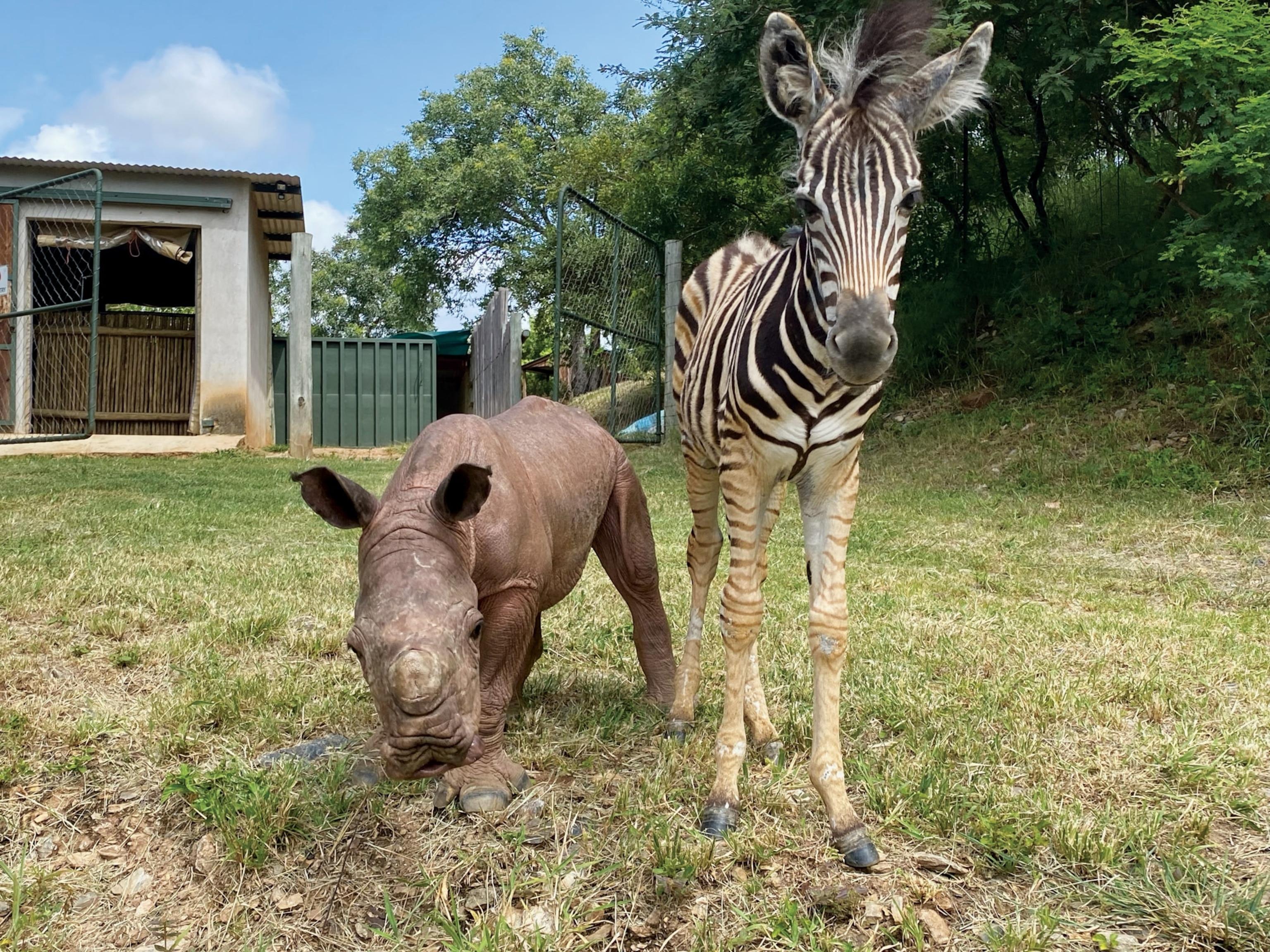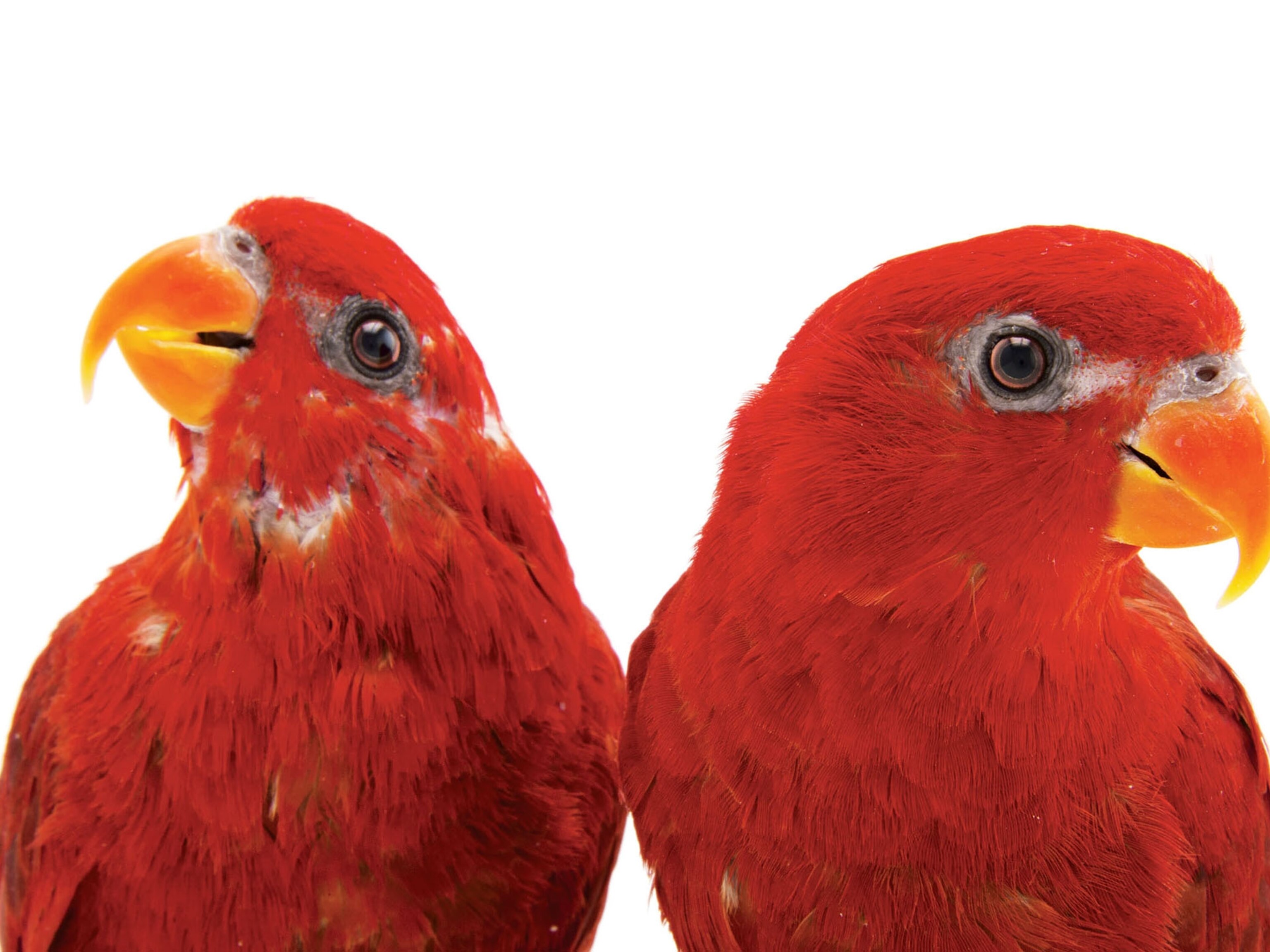
‘Every bird matters’: The science behind oiled seabird rehabilitation
Fifty years after the oil spill that inspired the creation of Earth Day, we’ve learned a lot about how to care for birds covered in oil.
Los Angeles — Veterinarian Rebecca Duerr gasps as she gently squeezes the belly of the black and white bird on her exam table. The size of a crow, with tomato-red eyes, a yellow beak, and a swan-like neck, the creature squawks feebly. “Super skinny,” Duerr announces as a colleague holds a towel over the bird’s head to keep it calm.
Eight days earlier, the bird, a western grebe, had been driven to the International Bird Rescue center in San Pedro from Santa Barbara, where it had become mired in oil that naturally seeps from cracks in the sea floor.
Seeing an oiled bird never gets easier, Duerr says. Their feathers, once evenly spaced and waterproof, stick together in matted clumps. With their sensitive skin exposed, they might start to shiver, or develop burns from the crude. Once effortlessly buoyant, they may struggle to stay afloat in water.
Conservation-minded Americans have been attempting to save oiled seabirds since at least the 1940s, but for several decades they did so without training—or much success. Nearly 80 years and several catastrophic oil spills later, oiled seabirds have a better chance of survival thanks to rehabilitation techniques honed by groups like International Bird Rescue.
International Bird Rescue’s Southern California center treats up to 400 oil-covered birds each year, mostly victims of Santa Barbara’s natural seeps. This allows the center’s staff to determine what methods work best in preparation for larger spills. “It’s a benefit and a disadvantage,” says Julie Skoglund, the center’s operations manager. “We see the same tough things over and over again, but that means we get to be on the leading edge of finding solutions.”
Such work is urgent. Seabirds are the most vulnerable species-group of birds; of 328 known species in the world, 102 are threatened or endangered. Seabirds face danger from invasive predators, climate change, and the gill nets used by commercial fishermen, which claim about 400,000 avian lives a year. Oil spills can be especially devastating: between 100,000 and a million birds are estimated to have died in the 2010 Deepwater Horizon disaster.
Santa Barbara’s historic spill
The oil that the unlucky western grebe encountered in Santa Barbara leaks into the ocean naturally. But it was an industrial disaster in the same waters 51 years ago that spurred the professionalization of seabird rehabilitation.
While tending to an offshore rig near Santa Barbara on January 28, 1969, Union Oil company workers were alarmed when a well they’d completed began gushing oil, gas, and mud. They plugged the well, but oil continued to gurgle into the ocean through cracks in the sea floor. By the time the leak was fully contained, it had become the worst oil spill in United States history. As many as 4.2 million gallons of crude oil had entered the ocean, spreading 80 miles north to Pismo Beach and 235 miles south to Mexico. The pollution killed at least 3,686 seabirds, whose pitiful images were splashed across newspapers around the country.
“I am amazed at the publicity for the loss of a few birds,” Union Oil president Fred Hartley said callously at the time.

There were no professionals dedicated to caring for oiled birds then. Instead, volunteers scooped up western grebes, cormorants, and other sticky birds, plopped them in cardboard boxes, and carried them to makeshift cleaning stations.
Few survived.
“What a lot of people took away from the spill was the images of those oil-slicked birds, flapping on the beaches,” says Roderick Nash, a professor emeritus of wildlife history at the University of California, Santa Barbara. “It was those pictures, as much as anything, that made Santa Barbara what they call the ‘blowout heard around the world.’”

The destruction inspired a rash of environmental legislation and motivated Gaylord Nelson, then a U.S. Senator from Wisconsin, to found Earth Day on April 22, 1970.
Indignation deepened less than a year later when two oil tankers collided in the San Francisco Bay, killing thousands of seabirds. Alice Berkner, a retired nurse with a passion for wildlife, founded International Bird Rescue shortly after. Many other organizations, including Tri-State Bird Rescue, another prominent avian rehabilitation group, followed. Today, the Oiled Wildlife Care Network at University of California, Davis, includes more than 40 member organizations in the state of California alone.
Rehabilitation or euthanasia
Almost as soon as people began trying to save oiled birds skeptics have argued that it’s a futile exercise. In 1996, ornithologist Brian Sharp published a study looking at the survival rates of previously oiled North American seabirds between 1969, when the Santa Barbara Spill occurred, and 1994. Sharp found that half the birds survived six days or less.
In 2010, when the Deepwater Horizon explosion coated the Gulf of Mexico in oil, German biologist Silvia Gaus suggested the birds harmed by the spill should be euthanized, not rehabilitated. Most of them were bound to die anyway, she argued; it would be better not to subject them to the stresses of cleaning.
Others chafe at such logic. Michael Ziccardi, director of the Oiled Wildlife Care Network, allows that euthanasia is the most humane option in some situations—such as when easily stressed species, like surf scoters and loons, become oiled. But he insists it shouldn’t be the default. “This is an anthropogenic cause of damage to the environment. We have an ethical obligation to do what we can to mitigate that damage,” he says.
That ability seems to have improved since Sharp published his paper in 1996.
“During larger spills, between 50 and 70 percent of the animals that we collect can be released,” Ziccardi says. “So even if a portion of those do die, there are a lot more animals that can survive than if we euthanized from the start.”
Research bears this out. A 2008 study found that gannets cleaned after a 1983 oil spill in South Africa survived only “slightly less well” than unaffected birds; a 2014 study in New Zealand found that the survival rates of rehabilitated little blue penguins were comparable to those of control penguins. Anecdotally, International Bird Rescue points out that the world’s oldest known king eider, a sea duck with a vibrantly colored head, is a bird their team rehabilitated after an oil spill in Alaska in 1996.
What we know now
When the oiled western grebe arrived at the International Bird Rescue facility in January 2020, the staff knew not to wash it right away, as teams had historically done during disasters like the Exxon Valdez spill of 1989. From fifty years of institutional experience they had learned the bird would be more likely to survive if they could coax it to drink water, choke down some Peruvian smelt, and rest before they subjected it to the stressful cleaning process.
Only after two days, when its weight had rebounded a little, did the staff gently scrub the bird’s soiled feathers with Dawn dish soap, the de-oiler of choice for most rehabilitators.
“If you’ve done a good wash, you’ll see water beading up on the feathers, like on an umbrella when it’s raining,” says Kylie Clatterbuck, who manages International Bird Rescue’s Southern California center. Such beading signals that the bird’s coat is becoming waterproof again.
After its wash, the grebe was dried using an adapted hairdryer and placed in a turquoise pool with another previously oiled western grebe. Duerr says it’s a deeper understanding of animal husbandry, rather than advances in cleaning, that has boosted survival rates of oiled birds in recent decades.


For instance, the International Bird Rescue team has learned that certain birds, including western grebes, seem to do better when housed in the same enclosure. “We have seen it stimulate birds to start feeding when they see others feed,” Duerr says. Other species, like surf scoters, tend to clash when housed together.
The team has also figured out that, counterintuitively, it’s best to feed emaciated birds leaner fish, to ease digestion. And after water-dwelling birds are cleaned, placing them in heated pools helps recovery by reducing the energy they have to expend on staying warm. This allows them to focus on drinking, preening, and digesting.
“Nowadays we’re successfully treating things that used to get euthanized,” Skoglund, the operations manager, says. She points to the common murre, a penguin-like bird found on North America’s sea cliffs, as an example.
Between 2011 and 2012, International Bird Rescue received 159 common murres, which were one of the species to fare worst in Sharp’s 1996 study. When the staff noticed that the murres’ health declined after being cleaned, they began giving the birds post-wash IV fluids with electrolytes. Trained personnel also force fed the birds—a risky procedure they caution must only be attempted by professionals. Combined, the techniques allowed the rescue center to rehabilitate and release more than half of the common murres in its care, up from 28 percent the previous year.
Western grebes are also tricky patients, and Duerr is concerned that the slim bird from Santa Barbara hasn’t gained enough weight since being washed. On the wall behind the monitor where Duerr studies the bird’s weight chart, someone had taped a photo of a seagull with a note that reads: “You go gull!”
Duerr chuckles upon seeing it, but she doesn’t need extra motivation. With North America’s birds under threat—recent studies found three billion breeding adults have disappeared since 1970 and two-thirds of the continent’s surviving birds are at risk from extinction related to climate change—International Bird Rescue’s tagline feels more relevant than ever: Every bird matters.
You May Also Like
Go Further
Animals
- Orangutan seen using plants to heal wound for first timeOrangutan seen using plants to heal wound for first time
- What La Palma's 'lava tubes' tell us about life on other planetsWhat La Palma's 'lava tubes' tell us about life on other planets
- This fungus turns cicadas into zombies who procreate—then dieThis fungus turns cicadas into zombies who procreate—then die
- How can we protect grizzlies from their biggest threat—trains?How can we protect grizzlies from their biggest threat—trains?
Environment
- What La Palma's 'lava tubes' tell us about life on other planetsWhat La Palma's 'lava tubes' tell us about life on other planets
- How fungi form ‘fairy rings’ and inspire superstitionsHow fungi form ‘fairy rings’ and inspire superstitions
- Your favorite foods may not taste the same in the future. Here's why.Your favorite foods may not taste the same in the future. Here's why.
- Are the Great Lakes the key to solving America’s emissions conundrum?Are the Great Lakes the key to solving America’s emissions conundrum?
- The world’s historic sites face climate change. Can Petra lead the way?The world’s historic sites face climate change. Can Petra lead the way?
History & Culture
- Meet the ruthless king who unified the Kingdom of Hawai'iMeet the ruthless king who unified the Kingdom of Hawai'i
- Hawaii's Lei Day is about so much more than flowersHawaii's Lei Day is about so much more than flowers
- When treasure hunters find artifacts, who gets to keep them?When treasure hunters find artifacts, who gets to keep them?
Science
- Why ovaries are so crucial to women’s health and longevityWhy ovaries are so crucial to women’s health and longevity
- Orangutan seen using plants to heal wound for first timeOrangutan seen using plants to heal wound for first time
Travel
- Why this unlikely UK destination should be on your radarWhy this unlikely UK destination should be on your radar
- A slow journey around the islands of southern VietnamA slow journey around the islands of southern Vietnam
- Is it possible to climb Mount Everest responsibly?Is it possible to climb Mount Everest responsibly?
- 5 of Uganda’s most magnificent national parks
- Paid Content
5 of Uganda’s most magnificent national parks







